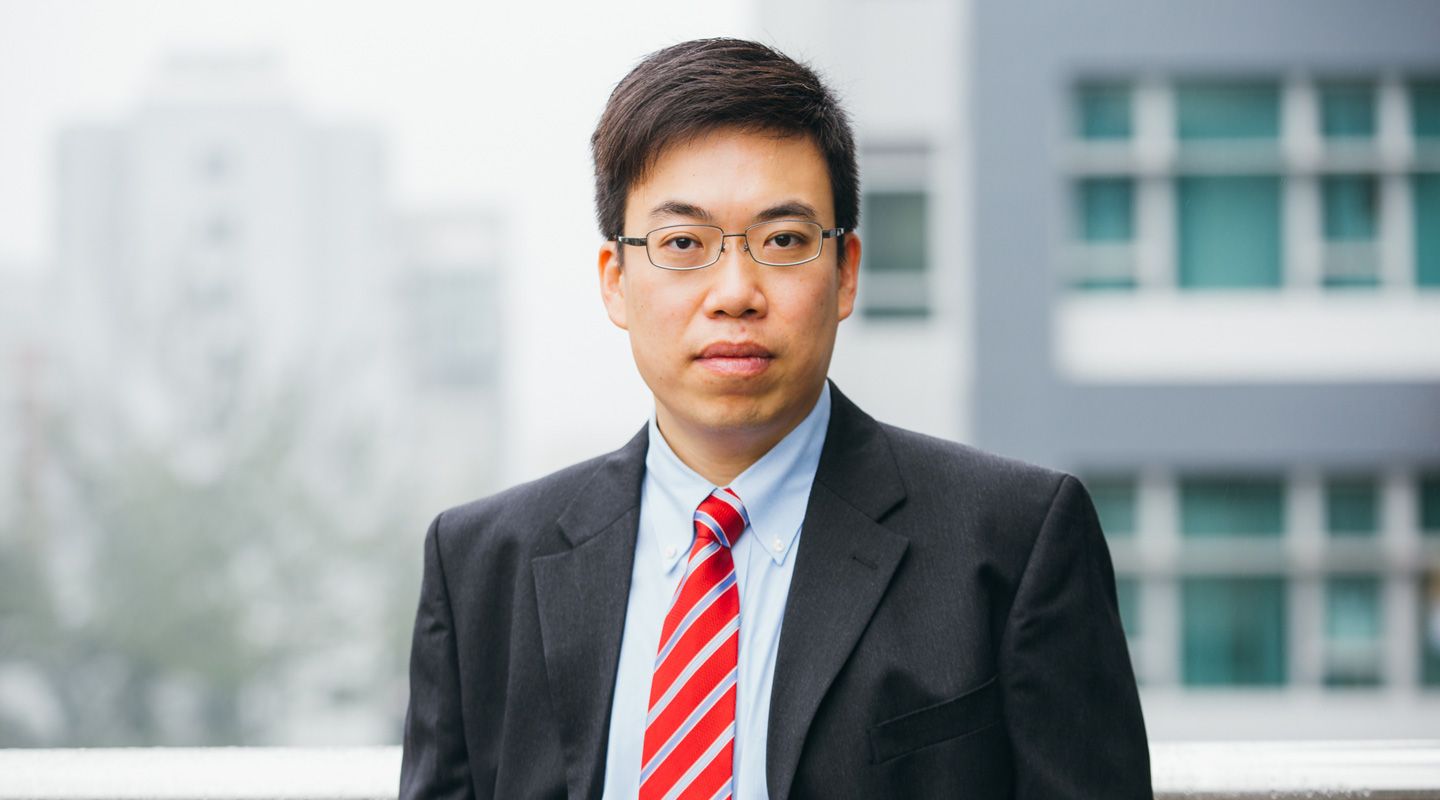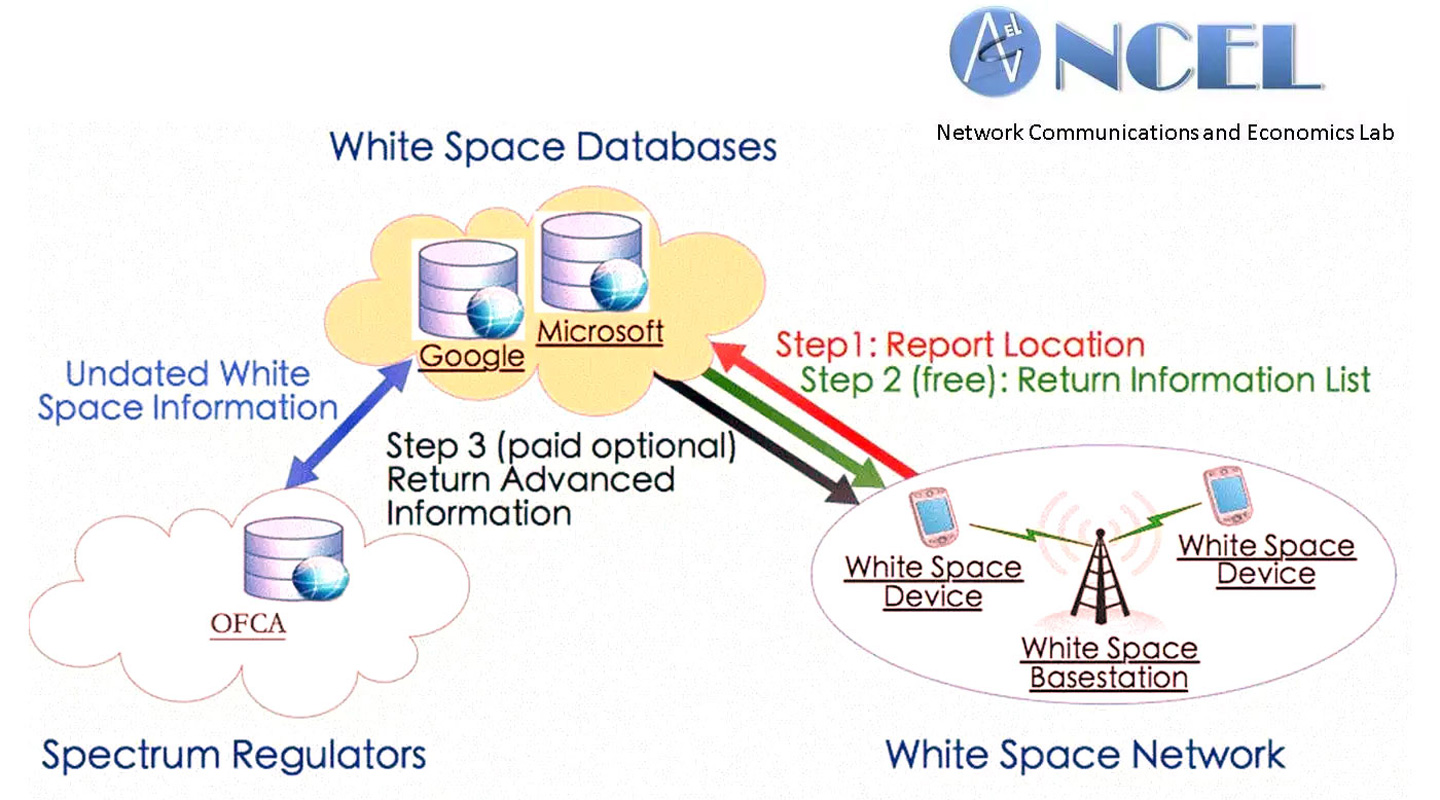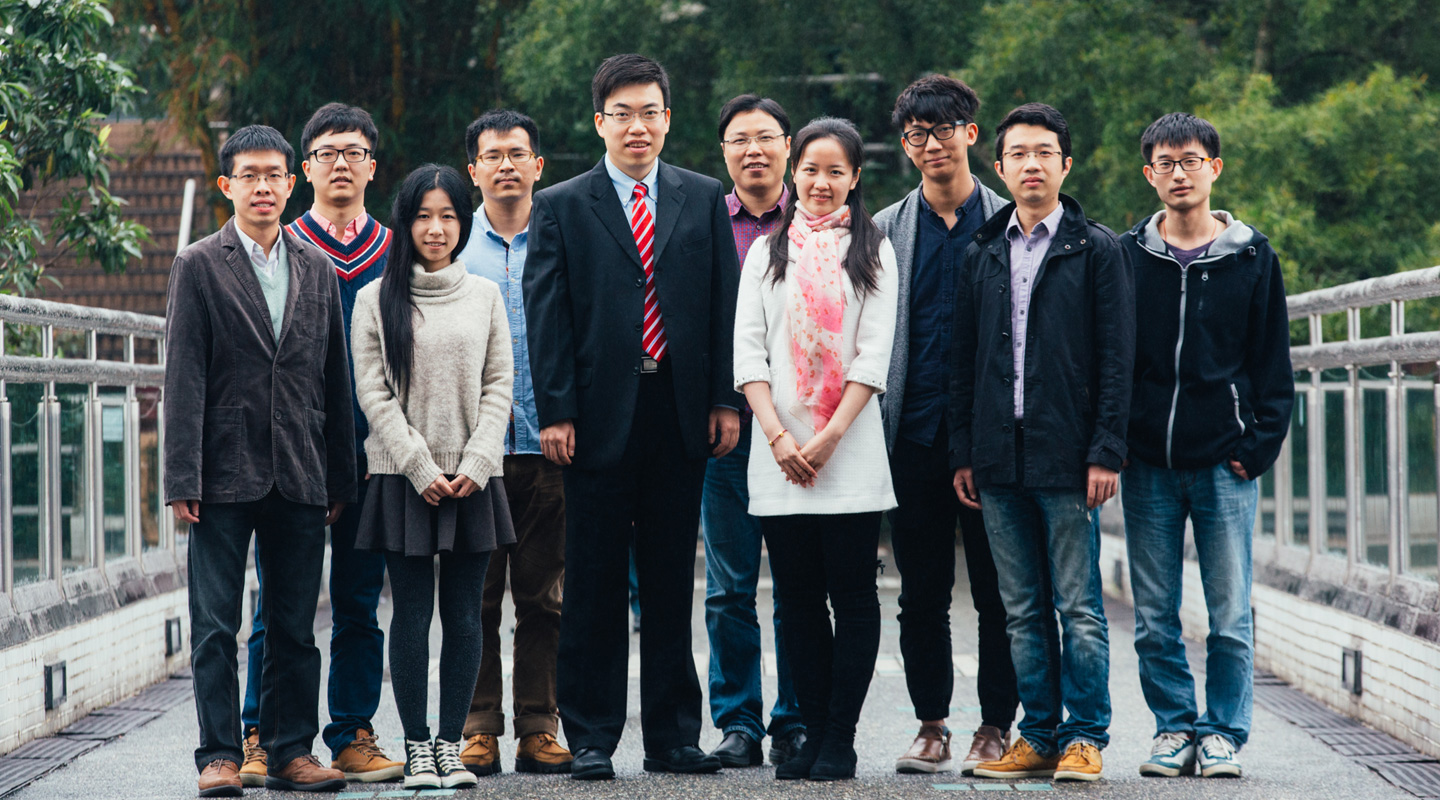Making the Most of White Space
Vacant TV frequencies open way for fast wireless future

“Super WiFi” in which everyone is connected almost all the time could be on the way, thanks to the work of CUHK Prof. Huang Jian-wei.
Professor Huang studies the use of “white space,” radio spectrum that is not fully used by the current license holders. He is particularly interested in white space in the televisual bands. Television licenses are allocated, typically, under the auspices of a communications regulator. The licenses cover large areas, creating “gaps” when, say, a station broadcasts in Wyoming but cannot cover the entire state. That empty part of the spectrum in that specific location is “white space.” Likewise, a television station may not broadcast 24 hours. So white space may occur at a specific time and vanish at other times in the same location.

Currently, the available radio spectrum suitable for telecommunication is running out due to the fast-growing use of wireless communications. As people switch to cable television and digital streaming there is less demand for over-the-air TV broadcasting. Conventional television stations are, in essence, dying. The amount of the spectrum that they used to use is up for grabs. But the use of it is almost universally unregulated at this stage.
The televisual part of the spectrum is particularly important because it can transmit information over a great distance at a fast speed. It can also be shared, with the number of users and amount of information they are using influencing the quality of the communication. “The TV spectrum is considered the golden spectrum,” Professor Huang says.

So the white space is valuable “real estate” but may be patchy in terms of coverage. It is freely available, so if allowed by local regulators, companies could provide easy access. But its unpredictability makes it hard to monetize, which in turn means companies have little incentive to make the most of it. The issue is to provide a profit motive for companies to track what part of the spectrum is being used in each exact location.
Professor Huang’s work on the use of white space intersects economics and telecommunication. He focuses on “spectrum economics,” the creation of new business models that would create an economic incentive for companies to monetize such things as white space.
The prime method that he has envisioned, and described in his academic papers, is the creation of business models based on the concept of generating white-space databases. These would help users identify the “empty” part of the spectrum for communications such as mobile-phone calls and the streaming of movies. This includes the creation of contracts for the exclusive use of TV white space and the creation of market mechanisms for the shared use of such space. This could help companies create Super WiFi that spans far beyond the typical modem, since the televisual part of the spectrum broadcasts information particularly far and well.
Microsoft has already demonstrated the use of white space, by building two mini-towers on its campus. It then used the television spectrum to broadcast information to its employees. It and several other companies are now working on ways to build more white space base stations, which are much more powerful, to send data far and wide.
Professor Huang started studying this issue of spectrum-sharing economics 15 years ago during his doctoral work at Northwestern University in Chicago. He is now an associate professor in the Department of Information Engineering at CUHK. Professor Huang’s idea for such database business models is that companies could offer information on the availability and quality of the white space, such as which channels are available, at where and at what time. They could also indicate how many people are using it. Different users could then pick channels that allow different speeds of transmission, with more data costing more money.
Email, for instance, may not require much bandwidth, but someone looking to stream a movie would need much more. The database could tell the email user that they can use channels 21 and 22 at a cheaper rate, while suggesting that the streamer use channels 23 or 24, and pay more. Companies such as Google and Microsoft are the natural gatekeepers of such information, but specialist providers such as Spectrum Bridge are also springing up.
So far, the United States, United Kingdom and Singapore have brought in regulation over white space. They have been treating the non-used part of the spectrum as public space as long as there is no impact on traditional broadcasting. Professor Huang has also been discussing the use of white space with the Hong Kong government, and has contacted the Chinese government on the topic.
“In Hong Kong and mainland China, we are lagging behind Europe and the U.S. in regulating white space,” Professor Huang says. “If the Western world has done the testing, we need to act fast to become a leader instead of a follower in the game.”
By Alex Frew McMillan
This article was originally published on CUHK Homepage in May 2016.

